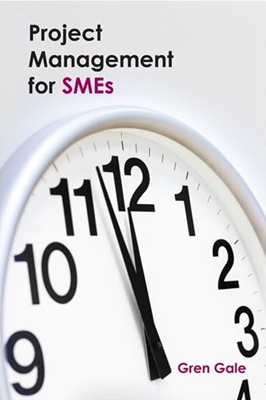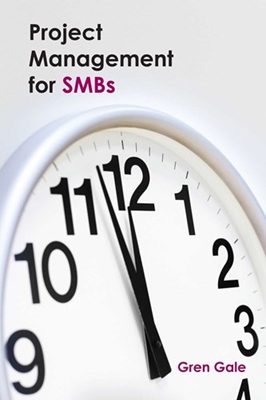Projects are naturally chaotic. If you want to retain customers and keep your staff sane, then you need bring order and tame the chaos and that’s the job of project management.
There’s a lot of over-complicated rubbish out there about how to run projects, so here are five steps to tame the chaos.
Start at the top
If you want to promote a good project culture then start at the top.
A company’s board doesn’t need to get into minute detail, but it does need to agree how projects will be run and then promote and sponsor that. Employees need to know that this isn’t some middle management initiative that they can quietly ignore, it’s coming from the top, so they need to pay attention.
Agree an Approach
This isn’t rocket science or brain surgery, but don’t read a few books or go on a course and think you know it. You need to get help from someone who’s been there and done it. Don’t even think about trying to pick up PMP or Prince 2 lock stock and barrel – while they’re full of good stuff, they’re massive industrial scale project management methods and unless you are either in government or running a monster project, you don’t need this level of overhead and bureaucracy.
You also need to agree a project management approach that integrates with your development methodology (assuming you’ve got one!). So you need to be clear how you estimate, specify, develop and test as well as project manage your products or services.
A good way to instil a consistent and repeatable approach to both project management and development is to use templates for the documents, spreadsheets and power points that you’re going to need to produce. This allows staff to hit the ground running and makes the approach repeatable
We’d also recommend selecting and using a project management package which also offers the opportunity to standardise a lot of what you, share data and collaborate better in teams. If you choose the right package, this should make life easier for both project managers and developers.
Once you have an approach, your company board needs to approve and promote it and staff need to buy into and believe in it.
Keep it small and manageable
The one thing that almost guarantees failure is running big projects. Incremental is good, managing massive projects isn’t. Big projects are somewhere between difficult and impossible to estimate and even harder to manage. They always seem to be in crisis mode when one deadline after another gets missed and everyone starts working insane hours to try to catch up. Make your projects small – I’d counsel that once a project is longer than 6 months, the probability of failure increases exponentially month-by-month.
Train
OK you’ve agreed an approach, now you need to get everyone trained to use it, not just the project managers – everyone! This includes board members who need to be as bought in, up to speed and enthusiastic as everyone else.
Clearly board members and team members are unlikely to require as detailed training as project managers, but don’t make the mistake of training project managers and ignoring everyone else. Projects are collaborative activities and you need everyone on board and bought in to achieve consistent success.
As well as training them, you’ll be selling the approach to your staff, so be prepared to listen to feedback and make changes where you think they’re appropriate. Involvement usually translates into enthusiasm, so try not to make it sound like a take it or leave it proposition.
Mentor
Don’t think that once you’ve trained everyone, that you can put your feet up and declare a job well done. You need experienced project managers to be on call to provide support and mentoring while your freshly trained project managers find their feet. They need support when they’re really not sure what to do.
Set up a portfolio management function
This isn’t usually foremost in people’s mind when they’re thinking of setting themselves up to run projects, but unless you’re only planning on running just the one project, you need to think about how you manage your portfolio in the most efficient way.
Portfolio management will allow you to
- Plan the project portfolio and agree priorities
- Monitor the performance of projects in the portfolio and report on this
- Monitor resource usage and help resolve resource conflicts
- Measure the impact on the rest of the portfolio if there’s a change in project priorities, serious slippage in a project or the loss of a key member of staff
- Perform what-ifs….what if we take on this new project…when can we start and finish it? What if we throw lots more resource at project x to finish it sooner, what effect will it have on everything else?
I’ve worked with companies who have managed their portfolio of projects with spreadsheets and while this has worked, it has been high maintenance. Well the good news is you don’t have to do that because there are a whole lot of project management packages out there that won’t cost you a fortune (if you pick the right one!) and will automate your portfolio management. The best packages will track project progress, costs, staff utilisation and allow you to produce a variety of reports.
Conclusion
The inability to manage projects efficiently can be corrosive for a product or service company. Staff morale falls away, project disasters start to become worryingly frequent and customers are lost. If this spiral continues the consequences can be tragic.
Want help to tame the chaos?
We can provide advice and training on how to tame the chaos – e-mail me on enquiries@pmresults.co.uk or call on +44 (0)7788 925027
Gren Gale is an author and consultant








Recent Comments